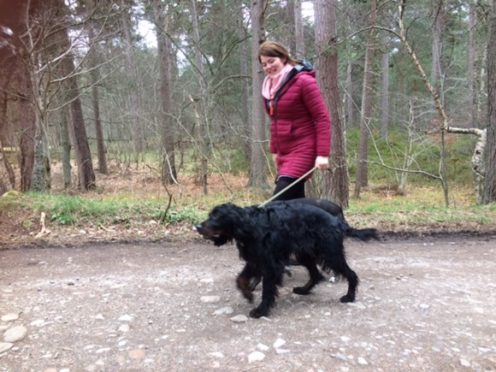Dog walkers visiting the Cairngorms in the nesting season are being warned to keep their pets under control.
The national park, which spans more than one million acres, is home to a quarter of the UK’s rare and endangered species and contains the same proportion of Scotland’s native forest.
For Capercaillie – the largest member of the grouse family – the national park remains a stronghold, with around 80% of its population residing there.
With the bird breeding season lasting from April to mid-August, walkers and adventurers gearing up to venture into the park’s great outdoors are being urged to ‘tread lightly’ in an effort to safeguard and help the parks species thrive.
Adam Streeter-Smith, an Outdoor Access Officer at the Cairngorms National Park Authority (CNPA) said: “From lapwings and curlew in wetland areas to capercaillie in the woodlands and dotterel on the high tops – all these species are vulnerable to disturbance by human activity. If you are passionate about the Cairngorms National Park and the amazing wildlife that makes it so special our advice to everyone – walkers, bikers, horse riders – is stick to the paths this spring and summer. In addition to that – if you have a dog with you – please keep it on a lead, or at least, under very close control.”
As part of the parks annual campaign, the Scottish Outdoor Access Code is asking individuals to act responsibly in moorland, woodland and forest areas to allow the breading season to take place, with dog walkers being encouraged to keep their dogs on a short lead and keep them under close control.
Glyn Jones, head ranger on the Balmoral Estate in the Cairngorms National Park, says everyone has a responsibility to do their bit to ensure species are not disturbed.
He said: “With access rights come responsibilities and no-one has the right to allow their dog to disturb, chase or attack the wildlife of the National Park. We all have a role to play in ensuring that our ground nesting birds get their breeding season off to a good start and if that means keeping your dog on a lead then please do so.”
Andy Ford, Cairngorms Nature Manager at the CNPA added: “Dogs are ‘man’s best friend’ but sadly that is not the case if you are a ground nesting bird. In certain areas like forests or wetlands dogs can be a real threat to wildlife. Your pet may be well behaved but it doesn’t take much for a nesting female to be disturbed and scared away from the nest, leaving eggs to chill, young to die of cold or fall prey to other creatures.”
